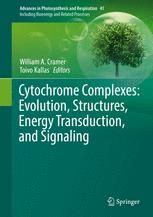

Most ebook files are in PDF format, so you can easily read them using various software such as Foxit Reader or directly on the Google Chrome browser.
Some ebook files are released by publishers in other formats such as .awz, .mobi, .epub, .fb2, etc. You may need to install specific software to read these formats on mobile/PC, such as Calibre.
Please read the tutorial at this link: https://ebookbell.com/faq
We offer FREE conversion to the popular formats you request; however, this may take some time. Therefore, right after payment, please email us, and we will try to provide the service as quickly as possible.
For some exceptional file formats or broken links (if any), please refrain from opening any disputes. Instead, email us first, and we will try to assist within a maximum of 6 hours.
EbookBell Team

0.0
0 reviewsAn Introduction that describes the origin of cytochrome notation also connects to the history of the field, focusing on research in England in the pre-World War II era. The start of the modern era of studies on structure-function of cytochromes and energy-transducing membrane proteins was marked by the 1988 Nobel Prize in Chemistry, given to J. Deisenhofer, H. Michel, and R. Huber for determination of the crystal structure of the bacterial photosynthetic reaction center. An ab initio logic of presentation in the book discusses the evolution of cytochromes and hemes, followed by theoretical perspectives on electron transfer in proteins and specifically in cytochromes. There is an extensive description of the molecular structures of cytochromes and cytochrome complexes from eukaryotic and prokaryotic sources, bacterial, plant and animal. The presentation of atomic structure information has a major role in these discussions, and makes an important contribution to the broad field of membrane protein structure-function.